
Wolfgang Amadeus Mozart was a prolific and influential composer of the Classical period. Despite his short life, his rapid pace of composition resulted in more than 800 works representing virtually every Western classical genre of his time. Many of these compositions are acknowledged as pinnacles of the symphonic, concertante, chamber, operatic, and choral repertoire. Mozart is widely regarded as one of the greatest composers in the history of Western music, with his music admired for its "melodic beauty, its formal elegance and its richness of harmony and texture".

Johann Georg Leopold Mozart was a German composer, violinist, and music theorist. He is best known today as the father and teacher of Wolfgang Amadeus Mozart, and for his violin textbook Versuch einer gründlichen Violinschule (1756).
The composer Wolfgang Amadeus Mozart went by many different names in his lifetime. This resulted partly from the church traditions of the day, and partly from Mozart being multilingual and freely adapting his name to other languages.

Maria Anna Walburga Ignatia "Marianne" Mozart, often nicknamed Nannerl, was a highly regarded musician from Salzburg, Austria. Already in her childhood, she established a remarkable reputation for herself across Europe as a child prodigy. However, her musical career was terminated by her parents, who forced her to stay in Salzburg and look for a future spouse. This did not stop her from utilizing her love and talent for music to teach the piano, as well as writing her own works, though no manuscripts are extant. Her younger brother Wolfgang Amadeus Mozart was said to have been greatly influenced by her.

Anna Maria Walburga Mozart was the mother of Wolfgang Amadeus Mozart and Maria Anna Mozart.

Maria Constanze Cäcilia Josepha Johanna Aloysia Mozart was a German soprano, later a businesswoman. She is best remembered as the spouse of the composer Wolfgang Amadeus Mozart, who from the evidence of his letters was deeply in love with her throughout their nine-year marriage. Following her husband's sudden death in 1791, Constanze Mozart escaped poverty and supported her family through concertizing and promotion of her husband's memory; she was responsible in part for the extensive posthumous publication of her husband's works. She is also regarded, less positively, as a source of mythology concerning her husband's life, deriving in part from the biography she jointly wrote with her second husband, Georg Nikolaus von Nissen.
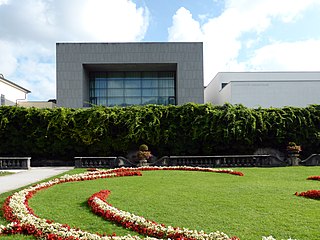
Mozarteum University Salzburg is one of three affiliated but separate entities under the "Mozarteum" moniker in Salzburg municipality; the International Mozarteum Foundation and the Mozarteum Orchestra Salzburg are the other two. It specializes in music, the dramatic arts, and to a lesser degree graphic arts. Like its affiliates it was established in honour of Salzburg-born musician Wolfgang Amadeus Mozart.
Hans Graf is an Austrian conductor.
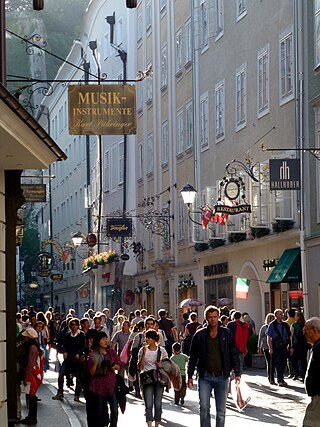
Getreidegasse is a busy shopping street in the historic Altstadt of Salzburg, Austria, a UNESCO World Heritage Site since 1996. It is known for the birthplace of Wolfgang Amadeus Mozart at No. 9, where he lived until the age of 17. The narrow street is characterised by numerous high townhouses side by side with its wrought iron guild signs.

Adolf Heinrich Friedrich Schlichtegroll was a teacher, scholar and the first biographer of Wolfgang Amadeus Mozart. His brief account of Mozart's life was published in a volume of twelve obituaries Schlichtegroll prepared and called Nekrolog auf das Jahr 1791. The book appeared in 1793, two years after Mozart's death.

Pietro Antonio Lorenzoni was an Austrian painter who is believed to have painted several portraits of Wolfgang Amadeus Mozart and his family: "The Boy Mozart" (1763), his sister Maria Anna Mozart in "Nannerl as a Child" (1763) and a portrait of their father Leopold Mozart. He arrived in Salzburg, Austria in the 1740s and first wanted to paint Wolfgang and Nannerl. His protégé, Johann Nepomuk della Croce, painted a Mozart family portrait in 1780.

The Mozart family grand tour was a journey through western Europe, undertaken by Leopold Mozart, his wife Anna Maria, and their children Maria Anna (Nannerl) and Wolfgang Theophilus (Wolferl) from 1763 to 1766. At the start of the tour the children were aged eleven and seven respectively. Their extraordinary skills had been demonstrated during a visit to Vienna in 1762, when they had played before the Empress Maria Theresa at the Imperial Court. Sensing the social and pecuniary opportunities that might accrue from a prolonged trip embracing the capitals and main cultural centres of Europe, Leopold obtained an extended leave of absence from his post as deputy Kapellmeister to the Prince-Archbishopric of Salzburg. Throughout the subsequent tour, the children's Wunderkind status was confirmed as their precocious performances consistently amazed and gratified their audiences.
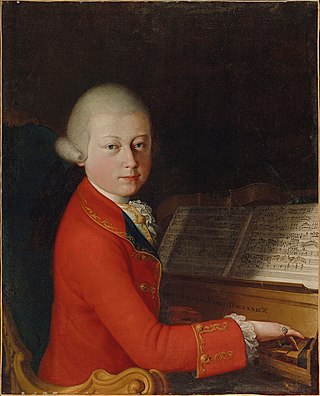
Between 1769 and 1773, the young Wolfgang Amadeus Mozart and his father Leopold Mozart made three Italian journeys. The first, an extended tour of 15 months, was financed by performances for the nobility and by public concerts, and took in the most important Italian cities. The second and third journeys were to Milan, for Wolfgang to complete operas that had been commissioned there on the first visit. From the perspective of Wolfgang's musical development the journeys were a considerable success, and his talents were recognised by honours which included a papal knighthood and memberships in leading philharmonic societies.
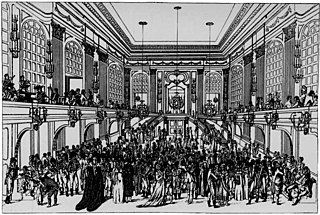
The composer Wolfgang Amadeus Mozart wrote a great deal of dance music, both for public use and as elements of larger works such as operas, quartets, and symphonies. According to the reminiscences of those who knew him, the composer himself enjoyed dancing very much; he was skillful and danced often.
In 1767, the 11-year-old composer Wolfgang Amadeus Mozart was struck by smallpox. Like all smallpox victims, he was at serious risk of dying, but he survived the disease. This article discusses smallpox as it existed in Mozart's time, the decision taken in 1764 by Mozart's father Leopold not to inoculate his children against the disease, the course of Mozart's illness, and the aftermath.

The Mozart family were the ancestors, relatives, and descendants of Wolfgang Amadeus Mozart. The earliest documents mentioning the name "Mozart", then spelled "Motzhart" or "Motzhardt", are from the Bavarian part of Swabia.

Bölzlschiessen was a form of domestic recreation that involved shooting darts at decorated targets with an air gun. It is remembered as an activity of Leopold Mozart, his family, and their friends. The most famous participant was Leopold's son Wolfgang Amadeus Mozart, who began playing at the age of ten or earlier.
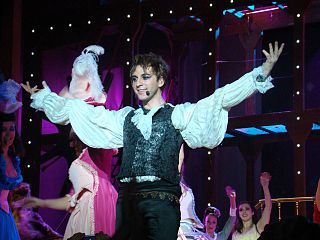
Mozart, l'opéra rock is a French musical with music by Dove Attia, Jean-Pierre Pilot, Olivier Schultheis, William Rousseau, Nicolas Luciani, Rodrigue Janois and François Castello, lyrics by Vincent Baguian and Patrice Guirao and a book by Attia and François Chouquet. The show is a dramatization of the life of Wolfgang Amadeus Mozart beginning from the age of 17 and culminating with his death in 1791 at the age of 35. It uses both original pop-rock compositions as well as pre-existing music composed by Mozart and other composers, including Antonio Salieri.

Mozart's birthplace is the birthplace of Wolfgang Amadeus Mozart at No. 9 Getreidegasse in Salzburg, Austria. The Mozart family resided on the third floor from 1747 to 1773. Mozart himself was born here on 27 January 1756. He was the seventh child of Leopold Mozart, who was a musician of the Salzburg Royal Chamber.

















